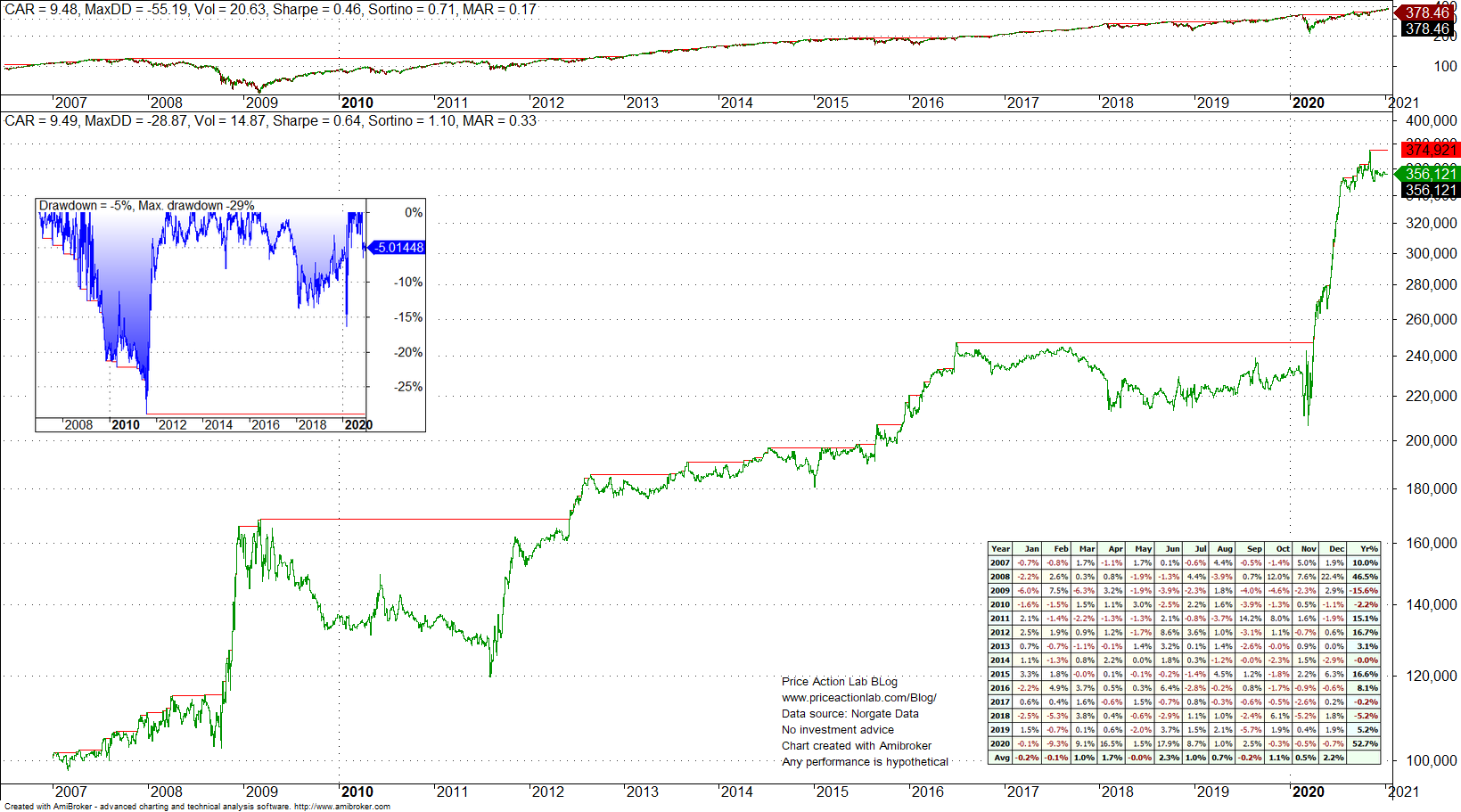The strategy in this article is based on an idea I call Newtonian fluxions applied to SPY ETF and Dow 30 stocks. The strategy reverses from long to short and it is constantly in the market. There is indication from backtest results that the strategy offer high convexity during market corrections.
I started looking at using ideas from Newtonian fluxions to develop a trading strategy four years ago and I have an article in the blog along those lines. The idea is fundamentally simple and the strategy has no parameters other than a lookback period over which the fluxions are calculated. It is a long/short strategy in the sense that it switches from long to short and always stays in the market. It is way easier to develop long-only strategies by applying suitable filters to avoid corrections in hindsight and this is the reason long/short strategies are rarely discussed in financial blogosphere. However, the only way to achieve convexity during adverse stock market moves is by shorting the market but this is not always easy.
For the backtests in this article I used Norgate data for Dow 30 index that include current and past constituents to remove survivorship bias. I highly recommend this data service to those who would like to remove survivorship bias from backtests (I do not have a referral arrangement with the company.)

Time-frame: Daily (adjusted data)
Strategy type: Long/short
Market: SPY ETF
Backtest period: 01/03/2007 – 12/31/2020
Commission per share: $0.01
Position size: Fully invested
Position entry and exit: Open of next bar
Below is the equity curve of the backtest with monthly returns.
The strategy has outperformed SPY ETF buy and hold with about 14% CAGG versus 9.5%. Maximum drawdown is 38.6% due to a loss of 32.8% in 2009 but after a gain of 124.3% in 2008. In addition, in 2010 – 2012 the strategy generated large returns. In 2020 the return was about 43%. Therefore, this strategy has provided a high degree of convexity during market corrections where the bulk of the gains came from. The Pearson correlation between SPY returns and the strategy returns in the backtest period is 0.1 or a little lower. The sample size is 906 trades and win rate is 60%.
Dow 30 stocks fluxion strategy results
Time-frame: Daily (adjusted data)
Strategy type: Long/short
Market: Dow 30 constituents, past and current (Norgate data)
Backtest period: 01/03/20007– 12/31/2020
Commission per share: $0.005
Maximum open positions: 20
Position size: Equity/20
Position entry and exit: Open of next bar
Rank: rate of change of fluxions
Below is the equity curve of the backtest (no commissions)
The strategy matches the annualized return of SPY ETF during the backtest period but provides high convexity during market corrections where the bulk of the gains came from. In 2008 the return was 46.5%, in 2011 it was 15.1% and in 2020 52.7%. Correlation with SPY ETF returns in the test period is 0.14 or little lower. The sample size is about 17,000 trades and win rate is 56.4%.
The conclusion is that the strategy based on fluxions can provide significant convexity during market corrections but this is preliminary work and there is more to be done to improve the performance without over-fitting to past data.
Charting and backtesting program: Amibroker
Data provider: Norgate Data
Technical and quantitative analysis of major stock indexes and 34 popular ETFs are included in our Weekly Premium Reports. Market signals for position traders are offered by our premium Market Signals service
If you found this article interesting, you may follow this blog via RSS or Email, or in Twitter








